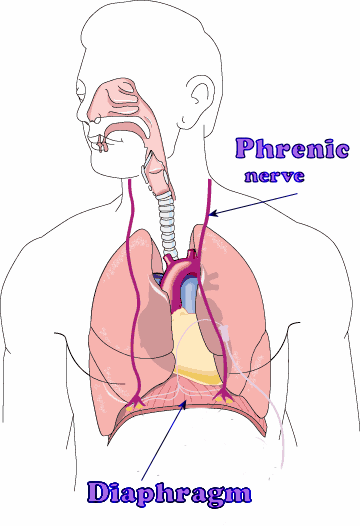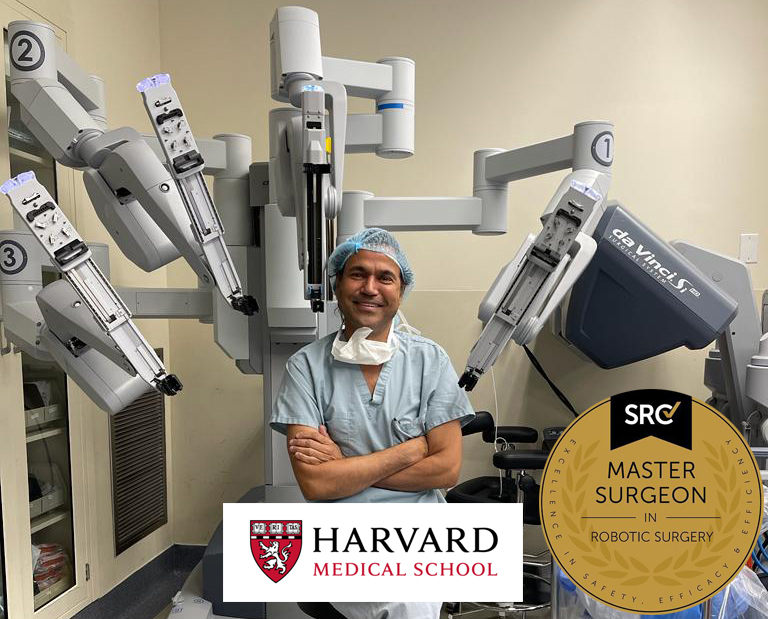Phrenic Nerve Endometriosis
Phrenic nerve endometriosis is a rare condition where endometrial tissue implants on or near the phrenic nerve, causing symptoms such as chest pain and breathing difficulties.
Phrenic nerve endometriosis refers to the presence of endometriosis lesions on or near the phrenic nerve. Endometriosis is a condition in which tissue similar to the lining of the uterus, called endometrial tissue, grows outside the uterus. This tissue can implant and grow on various organs within the pelvic region, but in rare cases, it can also affect organs outside the pelvis.
The phrenic nerve is a major nerve that originates in the neck and extends down to the diaphragm, which is the primary muscle responsible for breathing. When endometrial tissue implants on or near the phrenic nerve, it can cause irritation, inflammation, and scarring. This can lead to symptoms such as chest pain, referred shoulder pain, and breathing difficulties.
Phrenic nerve endometriosis is relatively rare, and its exact prevalence is not well-established. It is often challenging to diagnose because the symptoms can mimic other conditions, such as musculoskeletal disorders or respiratory issues. Medical professionals may use a combination of patient history, physical examination, imaging tests (such as magnetic resonance imaging or computed tomography), and in some cases, diagnostic laparoscopy (a minimally invasive surgical procedure) to confirm the presence of endometriosis on the phrenic nerve.
Treatment options for phrenic nerve endometriosis may include a combination of pain management, hormonal therapy (such as birth control pills or GnRH agonists), and surgical intervention. The specific treatment plan depends on the severity of symptoms, the extent of endometriosis involvement, and individual patient factors. It is crucial to consult with a healthcare professional who specializes in endometriosis or a gynecologist for an accurate diagnosis and appropriate management.
Is Phrenic Nerve Endometriosis Life-threatening?
Phrenic nerve endometriosis itself is not typically considered a life-threatening condition; however, it can cause significant discomfort and impact a person’s quality of life due to symptoms such as chest pain and breathing difficulties.
In rare cases, severe involvement of the phrenic nerve and associated complications may require surgical intervention, but with appropriate management, the condition can be effectively treated and managed. It is important to consult with a healthcare professional for an accurate diagnosis and personalized treatment plan.
Surgical Treatment for Phrenic Nerve Endometriosis
Surgical treatment for phrenic nerve endometriosis may be considered in cases where conservative measures and medical management have been unsuccessful in relieving symptoms. The specific surgical approach depends on factors such as the extent of endometriosis involvement, severity of symptoms, and individual patient factors.
One surgical option is laparoscopic excision, which is a minimally invasive procedure where the endometriosis lesions are removed using specialized surgical instruments. This approach aims to remove the endometrial implants on or near the phrenic nerve while preserving the surrounding healthy tissue.
In more complex cases or when there is extensive involvement of the phrenic nerve, open surgery may be required. This involves making a larger incision to directly access and remove the endometrial lesions. In some instances, a multidisciplinary team of specialists, including gynecologists and thoracic surgeons, may collaborate to plan and perform the surgery.
The decision to undergo surgery should be made after careful consideration and discussion with a healthcare provider such as New York Gynecology Endometriosis (NYGE) who specializes in endometriosis. They will assess the individual’s specific case, taking into account the severity of symptoms, impact on quality of life, and potential risks and benefits of surgery.
Phrenic Nerve Paralysis After Bipolar Electrocoagulation for Diaphragmatic Endometriosis: A Case Report and Mini-Review
Phrenic nerve paralysis is a rare complication that can occur after bipolar electrocoagulation is used to treat endometriosis of the diaphragm. A case study is presented on this topic by Zippl et al. (2022).
Objective: This report aims to describe a case where the right semi-diaphragm remained elevated after laparoscopic surgery to treat diaphragmatic endometriosis. It suggests that the elevation was likely caused by unintentional damage to important branches of the phrenic nerve due to the use of bipolar electrocoagulation. Additionally, the report provides a brief review of diaphragmatic endometriosis and its surgical treatment options.
Design: This is a case report and mini-review conducted at a single university-based endometriosis center that involves interdisciplinary collaboration.
Patient: The case involves a 33-year-old patient who had not given birth before. The patient initially presented with pain in the right shoulder and back, severe menstrual cramps, and diarrhea. Written consent was obtained to use anonymized data and images for research purposes.
Interventions: The patient underwent laparoscopic surgery, which involved bipolar electrocoagulation of multiple superficial endometriotic lesions on the right semi-diaphragm and excision of deep infiltrating endometriosis on the sacrouterine ligaments bilaterally.
Main outcome measure(s): The main focus was to evaluate the outcomes and complications associated with surgical treatment of diaphragmatic endometriosis.
Results: Three weeks after the surgery, the patient experienced exertional dyspnea (shortness of breath upon exertion) and right flank pain. Imaging revealed that the right semi-diaphragm remained elevated, and this condition persisted for six months. The report suggests that collateral thermal damage to key branches of the phrenic nerve during bipolar electrocoagulation of extensive superficial diaphragmatic lesions may be responsible for these symptoms.
Conclusion(s): The report emphasizes the need for caution when using bipolar electrocoagulation during laparoscopic treatment of diaphragmatic endometriosis to avoid potential damage to the phrenic nerve. It suggests that this technique should be used sparingly and with careful consideration.
Importance of Laparoscopic Treatment
The significance of utilizing laparoscopic treatment lies in its ability to minimize the risk of damaging the phrenic nerve
Laparoscopic treatment for phrenic nerve endometriosis is considered important because it offers several advantages in terms of minimizing potential damage to the phrenic nerve and facilitating a faster recovery.
Laparoscopic procedures are minimally invasive, involving small incisions through which a camera and specialized surgical instruments are inserted. The surgeon can visualize the affected area on a screen and perform precise movements to remove endometrial implants while minimizing trauma to surrounding tissues.
The benefits of laparoscopic treatment include:
- Nerve preservation: Laparoscopic techniques allow for better visualization and precision during surgery, reducing the risk of unintentional damage to the phrenic nerve. The surgeon can carefully navigate and manipulate tissues to preserve nerve integrity.
- Reduced scarring and pain: With smaller incisions, laparoscopic surgery generally results in less scarring and postoperative pain compared to open surgery. This can contribute to a quicker recovery and improved patient comfort.
- Shorter hospital stay: Laparoscopic procedures typically have shorter hospital stays compared to open surgeries, allowing patients to return to their normal activities sooner.
- Quicker recovery: The minimally invasive nature of laparoscopic surgery often leads to a faster overall recovery time, allowing patients to resume their daily routines and activities more quickly.

- New York Gynecology Endometriosis
- Contact Info:
-
375 E. Main Street,
Suite 7, Bay Shore,
NY 11706 - (631) 533-9733
Pankaj Singhal, MD, MS, MHCM
Master Surgeon in Robotic Surgery
Dr. Pankaj Singhal, a globally recognized endometriosis surgeon, possesses over 25 years of expertise in laparoscopic excision surgery, enabling him to tackle even the most challenging endometriosis cases with confidence. Dr. Pankaj treats patients with diverse endometriosis-related conditions, ranging from ovarian endometriomas to severe deep infiltrating endometriosis that affects the bowels and other organs.
Dr. Pankaj prioritizes minimally invasive surgery and provides comprehensive personal care. Additionally, he is the owner and founder of New York Gynecology and Endometriosis (NYGE), and has dedicated his life to advocating for, respecting, and treating women suffering from this little-known disease. He is one of the few surgeons in the entire United States who have completed over 5,718 robot-assisted gynecologic surgeries.

We Accept Most Major Insurance Plans
Convenient Billing Options for Comprehensive Coverage.
Surgeries are typically covered by health insurance. However, the extent of coverage can vary depending on the specific insurance plan and policy. Some insurance plans may cover a broad range of surgical procedures, including both elective and necessary surgeries, while others may have limitations or exclusions for certain procedures.
In some cases, certain insurance plans or programs may fully cover the cost of surgery, leaving the patient with no financial responsibility.
Request an Appointment with
New York Gynecology Endometriosis
"*" indicates required fields
